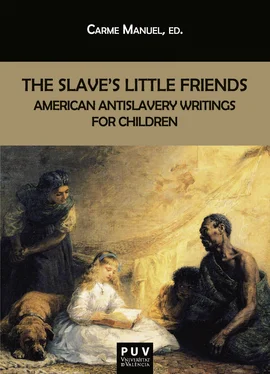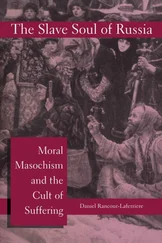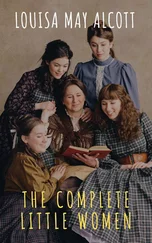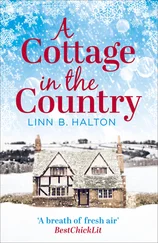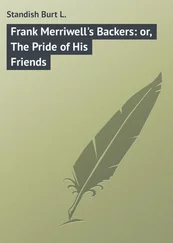The Children’s Anti-Slavery Missionary Association provided a way for children to work to contribute to the cause. Berea community leaders often wrote about this in the American Missionary . In their article “Children’s Anti-Slavery Missionary Societies: To Parents, Ministers of the Gospel, Superintendents and Teachers of Sabbath Schools, and all Educators of Children and Youth” ( American Missionary 2.1, January 1858, 13), George Whipple, S. S. Jocelyn and Lewis Tappen explained that “children must have their part in this glorious work, and if the enemy and the avenger are to be stilled, must bear the testimony to Christ, as they did in the temple on his triumphal entrance into Jerusalem… as children take pleasure in action, having some definite attractive object before them, we propose to the friends of pure religion and freedom, that they promote and secure, in their several localities, the formation of the Children’s Anti-Slavery Missionary Societies, the object of which shall be the promotion of a general interest among the young in missionary Associations, on Christian and antislavery principles, and more particularly for the support and extension of our missions in Slave States and their borders” (cit. Gudgeirsson 204). The members of the association would work to advance their cause and, as a token of recognition for their efforts, they would be granted a membership certificate. Fee referred to slavery as “the caste system” (Gudgeirsson 40) and described his college as an abolitionist school designed to foster abolitionism among their students from an early age. Their aims were to awaken children’s anger and opposition towards slavery and instill into them a sense of racial equality. They were convinced that white children educated to fight slavery and schooled with black children on equal terms would become future adults free of racial prejudices and full participants in a more democratic and free future.
The second volume appearing in the period running up to the Civil War was THE CHILD’S ANTI-SLAVERY BOOK, CONTAINING A FEW WORDS ABOUT AMERICAN SLAVE CHILDREN AND STORIES OF SLAVE-LIFE(1859), authored by Julia Colman and Mathilda G. Thompson. This is an illustrated book of children’s antislavery stories published by the New York firm Carlton & Porter of the Sunday School Union in 1859. It includes a short introduction, signed by “D.W.”, that is an address to American free children against the sin of slavery and their responsibility to take action against it. This preliminary text falls into one of the three modes of discourse that Benjamin Lamb-Books finds indispensable to abolitionist discourse, the Evangelical Protestant frame, as it constructs “slavery as a sin” that “should be repented from immediately” (96). Moreover, and to enhance the vividness and historical legitimacy of the tales that follow, readers are told that the “stories are pictures of actual life, and worthy of your belief.” The volume includes one story by Julia Colman (“Little Lewis: The Story of a Slave Boy”), two stories by Matilda G. Thompson (“Mark and Hasty; or, Slave-Life in Missouri”—based on real events in Saint Louis—and “Aunt Judy’s Story: A Story from Real Life”), and a short anonymous religious text—“Me Neber Gib it Up!”—about a slave being taught to read the Bible by a missionary in the West Indies. The book’s ten illustrations show slavery’s cruel oppression with scenes of family separation, a slave whipping, slave auctions, and hunting slaves with dogs. Except for the picture accompanying “Me Neber Gib it Up!,” the other nine illustrations were culled from Jewett’s Illustrated Edition of Harriet Beecher Stowe’s Uncle Tom’s Cabin without any acknowledgment of their author, Hammatt Billings. On February 10, 1859, a review in National Era on The Child’s Anti-Slavery Book declared that its stories are “natural and well-fitted for their object,” and “told evidently by those who are not unacquainted with life as delineated.” Finally, it is hoped that the book, as another volume of “this class of Anti-Slavery literature,” “may exert a beneficial influence wherever it goes.”
According to Jonathan Shectman, “from its first sentence, this slender book all but trumpeted its intention to do for pedagogy what abolitionism was doing for morality: “Children, you are free and happy. […] But are all the children in America free like you? No, no! I am sorry to tell you that hundreds of thousands of American children are slaves .” Children are directly confronted with American antislavery politics when they are told, in reference to the Fugitive Slave Law, that “violence has been framed into law,” and that “I want you to remember one great truth regarding slavery, namely, that a slave is a human being, held and used as property by another human being, and that it is always A SIN AGAINST GOD to thus hold and use a human being as property!… God did not make man to be the property of man…. On the contrary, he made all men to be free and equal, as saith our Declaration of Independence. Hence, every negro child that is born is as free before God as the white child, having precisely the same right to life, liberty, and the pursuit of happiness, as the white child…. Children, I want you to shrink from this sin as the Jews did from the fiery serpents. Hate it. Loathe it as you would the leprosy. Make a solemn vow before the Savior, who loves the slave and slave children as truly as he does you, that you will never hold slaves, never apologize for those who do” (28).
“Little Lewis” tells the true story of a slave boy who is forbidden to learn to read, and how, after going to Sunday School without his master’s permission, is cruelly whipped. His mother, who had been sold away, returns home and tries to kill herself as she feels overwhelmed by her impotence to fight against her master’s power. Julia Colman provides an illustration of the injustices of slavery—the breakup of the black family; black women’s insanity and infanticide impulses for their being deprived of their rights as mothers. As happens with Little Lewis in the diagetic world of the narrative, Colman provides a didactic lesson for her readers on the realities of America so that, like her protagonist, they are addressed as adults, and become “almost a man in thought.” For Jonathan Shectman (29), the story accomplishes several objectives: “It enlightened its young readers about the stifling realities of slavery. It encouraged erudition to its white, middle-class core audience. And above all it shored up white, liberal society through the person of Little Lewis. For, at the end of the day, Little Lewis wants to be just exactly like his white brethren: educated, free, and free-thinking, albeit amongst individuals of his own skin color.”
Margaret G. Thompson’s “Mark and Hasty” tells about a family breakup because of the forced separation of the father, the death of the mother and the efforts of abolitionists to help them against the lawful power of their owners. Against contemporary depictions of blacks as unfeeling creatures, the story underlines the unquestionable ties of love that the members of this black family feel for each other. In the next story, “Aunt Judy”, Thompson describes the life of a free black woman who is cheated out of her freedom, and contrasts her suffering with the comfortable existence of white people.
“Me Neber Gib it Up!” tells the story of an old black man in the West Indies who wants to learn to write and asks a missionary to teach him. His life-long years in slavery hinder his efforts now as a freeman to learn as quickly as the teacher wishes, and the missionary advises him to give up his wishes to become literate. The man adamantly refuses “with the energy of a noble nature” and answers: “ me neber gib it up till me die! ” because “it is worth all de labor to be able to read” the words in the Bible that speak about how the believers in Christ were granted “everlasting life.” The narrator appeals to the readers hoping for the physical and spiritual freedom of “all colored people of our happy land.”
Читать дальше
